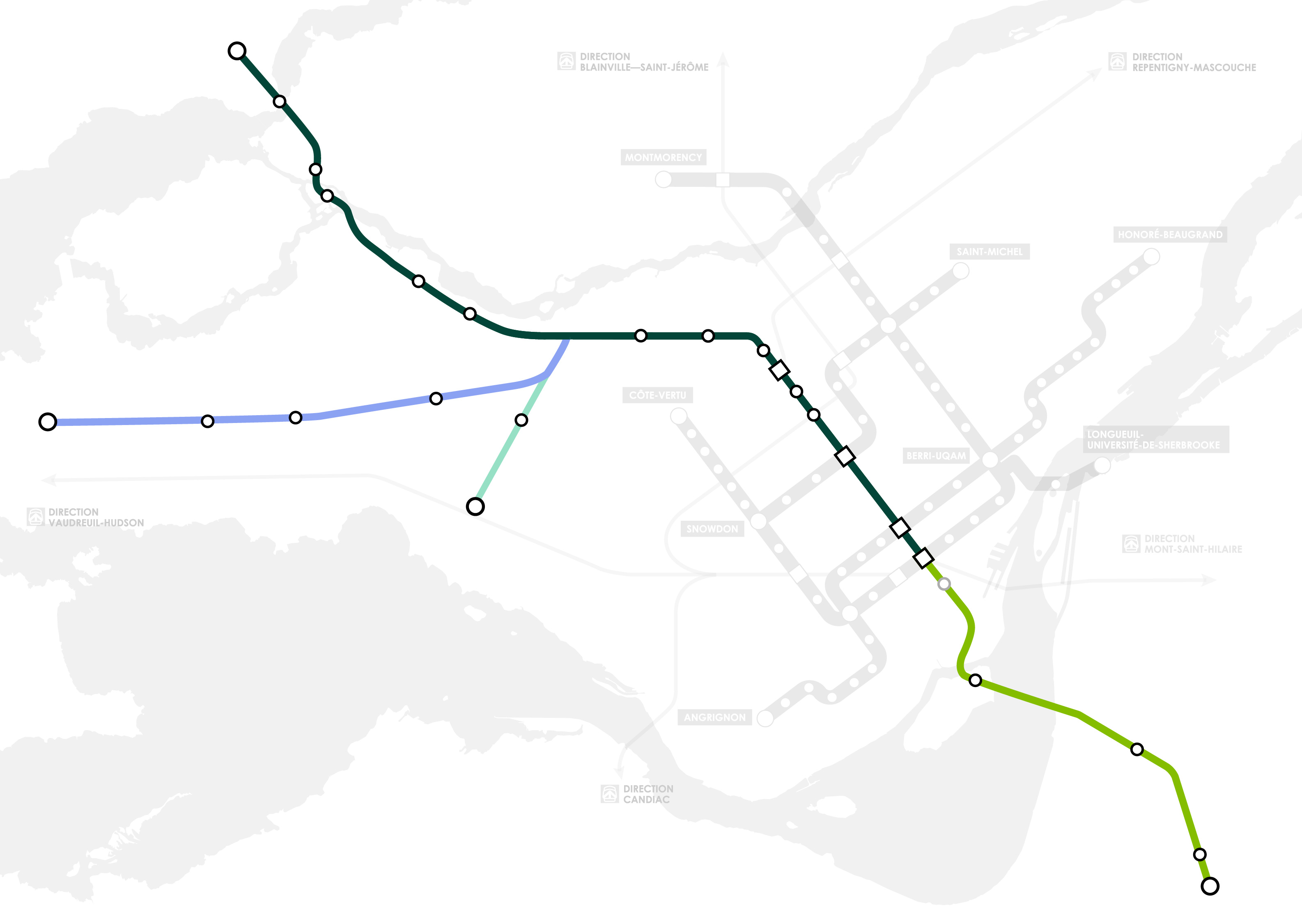Work Schedule
The timetable is provided for information purposes only and may evolve according to exchanges with our partners.
Commissioning schedule
The schedule has been updated:
| Legend | |
| South Shore Branch - In service | |
| Deux-Montagnes Branch - In service | |
| Anse-à-l'Orme Branch - Spring 2026 | |
| Airport Branch - In 2027, in collaboration with Aéroport de Montréal | |
 Map of upcoming commissioning
Map of upcoming commissioning
West Island and airport
Dynamic testing continues in the West Island
Dynamic testing began between Anse-à-l'Orme and Des Sources stations on September 3, 2024. Learn more.
Anse-à-l’Orme branch
- Finalization of interior and exterior work on Des Sources, Fairview-Pointe-Claire, Kirkland and Anse-à-l’Orme stations, including bus terminals.
- Finalization of landscaping work.
YUL-Aéroport-Montréal-Trudeau branch
- Continuation of catenary installation (cable pulling).
- Finalization of restoration work near the facilities.
- Finalization of interior and exterior work on Marie-Curie station.
- Installation of electrical wiring in the tunnel leading to the airport.
Stations in the West Island and Airport sector
Keep informed about the work
Works info
Every week, we update the map of ongoing construction sites.
Newsletter
Stay up-to-date on the project’s major milestones.
Get in touch
Do you have any questions about the work? Contact a team member dedicated to your area.